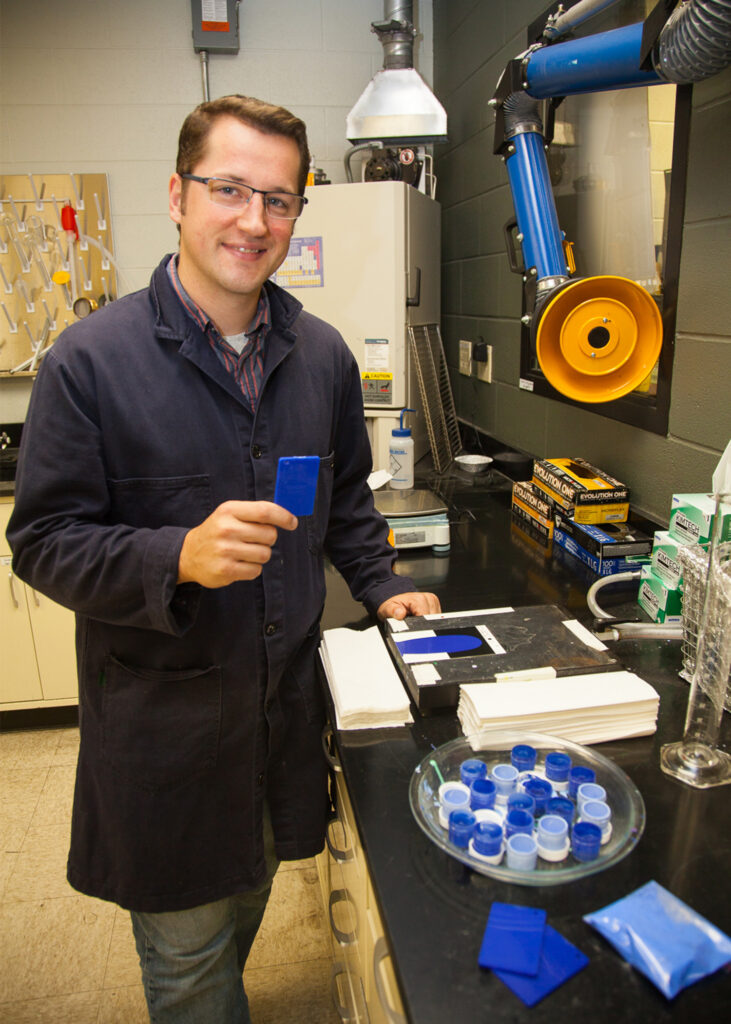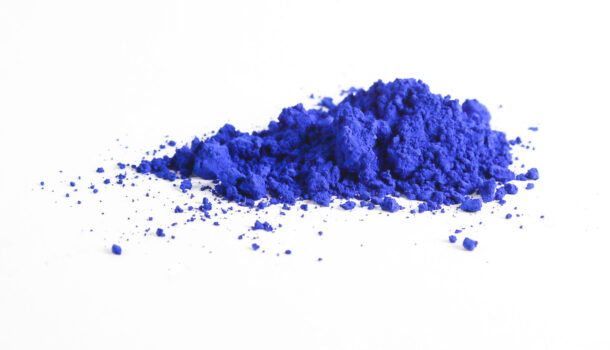ABOVE PHOTO: YInMN, the first new inorganic pigment discovered in more than 240 years. Provided by Andrew Smith.
Andrew Smith enjoys color and science, asking questions like, what causes color? How is color formed? How are pigments made? Combining his interests in graduate school at Oregon State University gave him a new perspective.
“I started to understand what color was and how to manipulate it, which was no trivial task. And best of all, it led me into a career where I could research new materials and chart my own path,” he said.

Smith is originally from Minnetonka, Minn. but graduated high school from Cameron, Wis. He earned his bachelor’s in applied science from UW-Stout in 2006. In 2009, he was working as a graduate student in materials chemistry with chemist Mas Subramanian and a team at OSU, researching multiferroics, materials to be used in electronics.
Smith combined the elements Yttrium, Indium, Manganese and Oxygen and placed the mixture in a furnace at approximately 2,000 degrees. When he removed the composition, typically black or dark gray in color, from the furnace and characterized the hexagonal crystalline structure, he found that it had lost much of its electronic properties. So, he continued to push the compositions.
What Smith removed from the furnace next was a surprise. Instead of black, the new composition was a brilliant blue. Smith had accidentally co-invented a new inorganic pigment.
“My first thought was, ‘Strange. Why would these materials be such a bright blue?’” he said. “I thought that I had contaminated the material or that the ingredients didn’t react. When I analyzed the crystal structure, I was surprised to find that I had in fact made a pure material.
“Each composition was a single phase. Think of this like making a proper cake with any ratio of milk and sugar. Yes, the taste may vary, but it still looks and feels like a cake. It was unusual, which was another indication I should find out why. This led to more compositions, analyzing the optical spectra and more crystallography.”
Smith and the team at OSU named their discovery YInMN, for the compounds it contains. Its vibrant blue is not a naturally occurring pigment but instead derives its color from the metallic elements combined with oxygen.
“Andrew is testament to how a hands-on education allows our students to see themselves doing something bigger than they thought they could,” said Ann Parsons, UW-Stout biology professor.
Subramanian, who had previously worked for DuPont, understood immediately the significance of the team’s discovery. In May 2012, they received a patent with the U.S. Patent Office for the new pigment.


